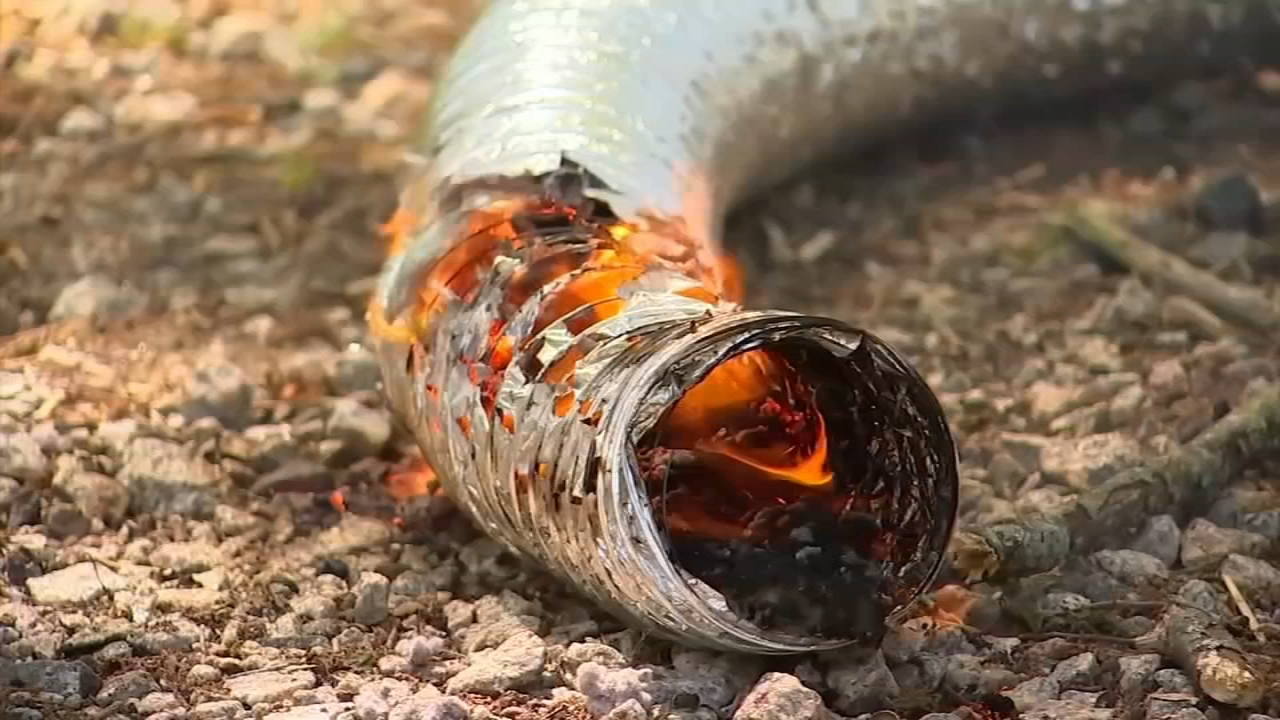Dryer fires not just from lint traps; check vents too
CHICAGO -- Clothes dryers are second only to stoves when it comes to causing house fires, and are responsible for hundreds of them every year in Illinois alone, but experts say these fires are preventable. Most people know to keep the lint trap inside their clothes dryer clean, but there's another fire risk that isn't so easy to check.
"We think it was a lint situation. Completely unexpected," said Joe Pomilia, Park Ridge resident.
Pomilia and his family know firsthand the shock of having their dryer start on fire. In March, Pomilia's wife had just started the dryer when she heard a strange noise.
"She went back to check the dryer and there was smoke in the dryer, which quickly turned into a fire. It was so amazingly fast that you just can't believe it," he said.
Fortunately they were home when it happened, and were able to prevent their entire Park Ridge home from burning.
"We've always been diligent about taking care of the lint and things like that, but even with that these kinds of things can happen and it's more common than you think," Pomilia said.
The National Fire Protection Agency estimates a nationwide average of 12,900 home dryer fires per year between 2012 and 2016. On average, dryer fires are blamed for 10 deaths, 360 injuries, and $211 million in property damage annually. According to the Illinois Fire Marshall, there were 273 dryer fires in Illinois just last year.
"The vent needs to be checked and cleaned once a year," says Keinan Buskila of Air Flows Chicago. "This is a flex vent, not a metal vent, and this needs to be changed every couple of years."
Air Flows Chicago cleans dryer vents with a long tube and brush from the outside of your home for a fee, but you can do some things on your own.
"After every load we always recommend that people clean the front of the dryer machine," said Buskila. "If you have a hazard light on or it takes you more than one load to dry your clothes, we highly suggest that you call a professional."
Simply taking the tube off the vent behind your dryer and looking can help. Make sure your vent is not obstructed or crushed behind your dryer so there's good airflow.
"Lint is very easy to burn, very flammable, doesn't allow for adequate air flow," says Scott Gregory of the Wake Forest Fire. "You're working with high temperatures in a dryer, so over time it doesn't allow for adequate airflow. So it can't ever cool down, so it's just harnessing all of that energy."
Homeowner Erich Muellner said his vent hadn't been cleaned in about five years. He was surprised by the amount of lint Chicago Air Flow took out of his vents.
"There was a lot in there. It does make you think about the safety risk if there was a fire," Muellner said.
The process is quick. A technician disconnects the vent from the dryer to make sure it's clean, then they vacuum up the extracted lint.
A cage protects homeowner Mark Goldberg's exterior vent from animals, but it also needed a cleaning after 10 years.
"I never had an idea that it was a fire hazard, I thought you just clean the lint trap. To our surprise we neglected cleaning something important," said Goldberg.
"If your dryer does start smoking leave the door shut, try and turn it off, and walk away," said Gregory. "If it's in the laundry room, close the door and call 911. The worst thing you can do is open it. It gives it more oxygen and then you will have a bigger fire."
Experts say the biggest warning sign that you have lint build-up is if your dryer is taking longer than usual to dry your clothes. The frequency of cleaning your vents usually depends on the number of loads you typically do.
If you are getting vents professionally cleaned the average cost is $150 to $350.

DRYER VENT MAINTENANCE TIPS AND STEPS YOU CAN DO ON YOUR OWN
Clothes dryer do's
Installation
Cleaning
.
Maintenance
Clothes dryer don't's
.
For more information, click here to visit the U.S. Fire Administration











